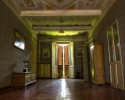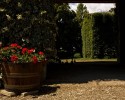The History of Cà Masinet
Villa Mazzotti ( B&B Ca' Masinet )
In the life of rural population and in the bourgeois society the lord and rural mansions, small farms played all an important part: numerous villas and houses were destroyed during the war or by the negligence of later owners. But someone remains as dense and full page of history... Continue
They say about us..
Origins
The age of construction of Villa “Mazzotti" is the early 18th century. It appears in fact that the Villa was already mentioned in the old 1800's military topographical papers as well as the name of the owner. The villa is located at the center of a wide park, rich of vegetation and punctuated from bushes and flowers. Even being restored in the year 1900, The Villa has preserved its simple architectonic lines and the seven-nineteenth-century two floors style with the decorated facade that turns to Levant and the two shorter lateral wings used in past as services. The facade of the first floor is adorned of an iron wrought balcony while the ground floor, it is approached with an arch portal to a majestic corridor. The kitchen as well as the corridor and the ceiling still testify their original aspect showing traces of historical paintings.
The first owner was the doctor Arrigo Mazzotti of Florence then, at the beginning of the 1900's (probably in 1906), the villa was acquired by Mr. Rambelli of Russi which later sold the villa and the park to the Mazzotti brothers (known in the zone with the nickname of Masinet). Even though homonymous the brothers did not had real blood ties with the first owner. In the park, there are many worthy places.
One of these is represented by a small hut formed from shrubs of boxwood which features a round table in concrete. It is believed that around this table a convention of liberals which featured also the future first minister of the reign of Italy Luigi Carlo Farini (1812-1866), was kept.
An imposing Austrian pine stood the test of time as well as a characteristic sink in masonry with gothic lines and with a small wind flag showing the typical crest of Florence (giglio fiorentino) and the letters " M.A." (Mazzotti Arrigo).
[Extracted from the writings of Giovanni GAVELLI]








